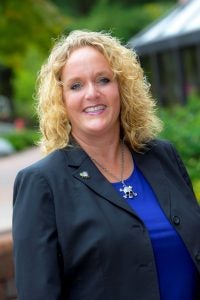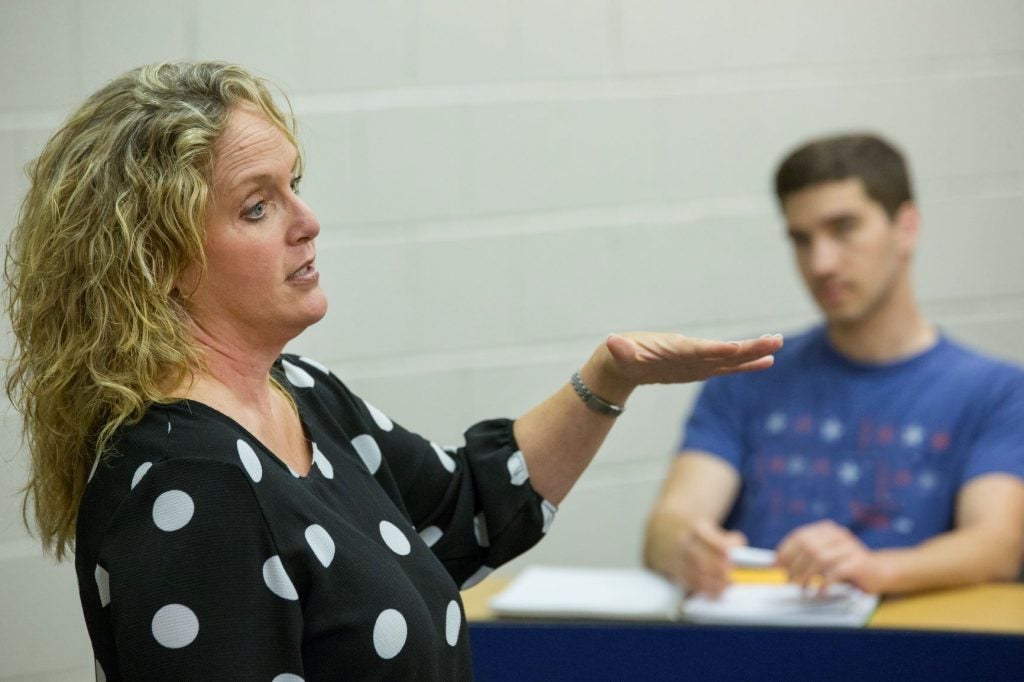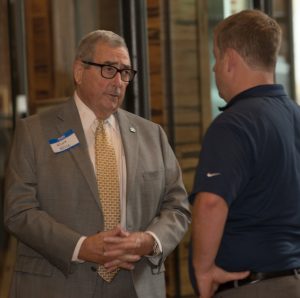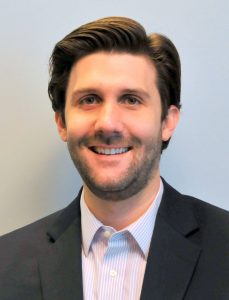September 9, 2019
COB's RMI Department celebrates 10 years
 Dr. Brenda Wells has been there since the beginning of the College’s Risk Management and Insurance (RMI) program. It started 10 years ago, and as the RMI director and the Bird Distinguished Professor of RMI, we thought it would be appropriate to speak with her about the department’s 10-year anniversary, history and its role in producing the next generation of RMI leaders.
Dr. Brenda Wells has been there since the beginning of the College’s Risk Management and Insurance (RMI) program. It started 10 years ago, and as the RMI director and the Bird Distinguished Professor of RMI, we thought it would be appropriate to speak with her about the department’s 10-year anniversary, history and its role in producing the next generation of RMI leaders.
The RMI program is 10 years old! Talk about the importance of this milestone anniversary?
Typically, academic programs grow very slowly. So it takes a good five to 10 years to reach critical mass in enrollment. Ten years is a logical point to evaluate success or failure. With 150 students in our program, I conclude that we have reached the point of “success.”
What has sustained the program over the past 10 years?
I wrote and published a paper several years ago that discussed four things an RMI program must have to be successful. Like four legs of a table, if you are missing any one of those things, the program is not on solid footing.
The four elements of a successful program are 1) supportive university administration, 2) hard-working students, 3) an industry that hires those students and supports the program, and, 4) a faculty director who leads the development and maintenance of the program. I have done my very best as the faculty director of the program since the program’s inception. And our program’s success has been sustained by the supportive administration at ECU and the College of Business, our wonderful RMI industry and advisory board, and of course, the fantastic Pirate students who have gone through our program.
Also, our program would not have the success that we’ve had without having a strong and supportive team that has worked together over the past eight years. I want to thank both Dr. Brad Karl and Kurt Fickling for their dedication to not only our students but the RMI program, as well.
How has industry and associations played a part in sustaining the program over the past 10 years?
The industry and its related associations have supported us in four significant ways. First, in the beginning, Independent Insurance Agents of North Carolina (IIANC) provided funding (or what we like to call, their treasure) to encourage ECU and the College of Business to build the program. They expressed a need for an RMI program in eastern North Carolina, and, they were willing to fund that program. Since that time, IIANC, as well as North Carolina Surplus Lines Association (NCSLA), have made regular donations to provide for students’ services, activities and other needed items. Their goal was to ensure that we could educate and train our students just as well as any of the older, more established programs in the U.S.
Second, the industry associations and individual employers that gave (and continue to give) our students opportunity (ies). They hired our students from the beginning and have continued to fill talent needs with RMI Pirate graduates. They sometimes created internships when industry, otherwise, did not have an internship program!
Third, the industry members have used their influence and contacts to get our name in the RMI world. Industry executives have supported us, promoted us and asked their hiring managers to give us a chance. So far, everyone has been pleased with the talent we produce and have made sure that others find out we are here.
Fourth and finally, the members of our industry have been very generous with their time. They have served on the RMI department advisory board and the College’s Advisory Council. They have spoken to classes. They have held shadow days for students to learn about the industry.
 How does the RMI student of 10 years ago compare to today’s RMI student?
How does the RMI student of 10 years ago compare to today’s RMI student?
They have all been wonderful! I don’t want to take anything away from the first graduates of the program, who have been very successful and very self-made because they did not have an alumni base to tap into when they graduated. Employers were not beating down our door at first (because they didn’t know who we were), so those first graduates had to really work hard and be very entrepreneurial to find opportunities.
Today’s RMI student has a lot more resources available. They have that external network of alumni and advisory board members ready to help them. We have quadrupled our scholarship opportunities for RMI students over 10 years, so we are better equipped to help students who are at-risk or in financial need. We now also take approximately 12 field trips a year for them to learn and grow from, getting the shyest and untraveled student out of their comfort zone. Finally, the College of Business’ Leadership and Professional Development program has made today’s students very savvy beyond their years in networking and relationship building.
What are examples that highlight the success of the RMI program?
Business Insurance ranked us No. 16 in terms of size for 2018.
We now have students working at major employers from eastern North Carolina to Atlanta, Georgia, to Dallas, Texas, to the New England area.
Two of our graduates from 2015 have already earned a vice president title. Is that not amazing? Less than five years out of school and they are already vice presidents!
We now have our own career fair specifically for RMI.
We will take our fourth trip to London in May 2020. In each trip, 12 students get to learn all about the international insurance market, and thanks to a dear friend and ECU alumnus, they get to observe transactions taking place at Lloyd’s of London.
In 2019 we had our first intern at Munich-Re and its summer Leadership Development Program. She was one of 10 nationally selected students to participate.
We now have three full-time faculty, which is a long way from the one person (me) that we started with 10 years ago.
Where do you see RMI education 10 years from now?
The RMI field is going to see an interesting transition in the next 10 years, in large part due to the relatively new existence of “big data.” Students will need to be more cognizant of data analytics and its impact on the insurance underwriting and claims processes. Their critical thinking skills will be put to the test as they are presented with so much more information than was previously available. They will need to be able to determine what’s important and what’s not and be able to make meaningful conclusions from that information.
They also will need to be more technologically savvy (today’s students already are, of course). However, there will be more technology, including artificial intelligence (AI), that students will need to understand and be comfortable using it.
Despite those conditions, insurance is, has always been and always will be, a relationship business first. While some of our processes will ultimately be impacted by AI, the choice to do business with a particular insurer, agent or broker will still be made by a human being who has specific needs and preferences that must be understood. No amount of AI can make underwriting or risk management decisions on a large, complex commercial insurance account. So, professionalism and interpersonal skills will still be critical to those in the RMI field. We will continue to encourage and reinforce those skills every chance we get.
What are the current challenges facing the RMI industry? How can those challenges be fixed?
There are two major challenges facing the property and casualty insurance field. The first is the number of baby boomers retiring from the workforce. I have written about this before; it is not a talent “crisis,” it is a talent “cliff.” The number of open jobs available depends on who you ask, but a conservative estimate is 200,000. So, our industry will have to compete with other industries that want the most talented college graduates
The other problem that has plagued us for a long time is the public perception of the RMI industry. People are not trained in RMI in school, and most do not understand what we do or why we are essential to the U.S. economy. As an industry, we have a hard time appealing to incoming college students. Think about it. If you’re 20 years old, what do you know about insurance? You know when you started driving that your parents had a complete meltdown about your insurance premiums. What you don’t know at that age is how much opportunity there is for a career! We try to overcome this challenge by providing as much information as possible to prospective students, so they don’t pass us over. This image problem directly impacts the talent availability problem.
There are several other challenges. One example is autonomous vehicles, which are going to present some interesting problems for auto insurers both in terms of underwriting and in terms of claims handling. climate change is another example. climate change is increasing weather-related losses both in terms of frequency and severity, which directly affect every player in the U.S. economy, but especially RMI, because that’s what we do, is manage unavoidable risks!
- Categories:
- Feature
- LCD
- Risk Management & Insurance


